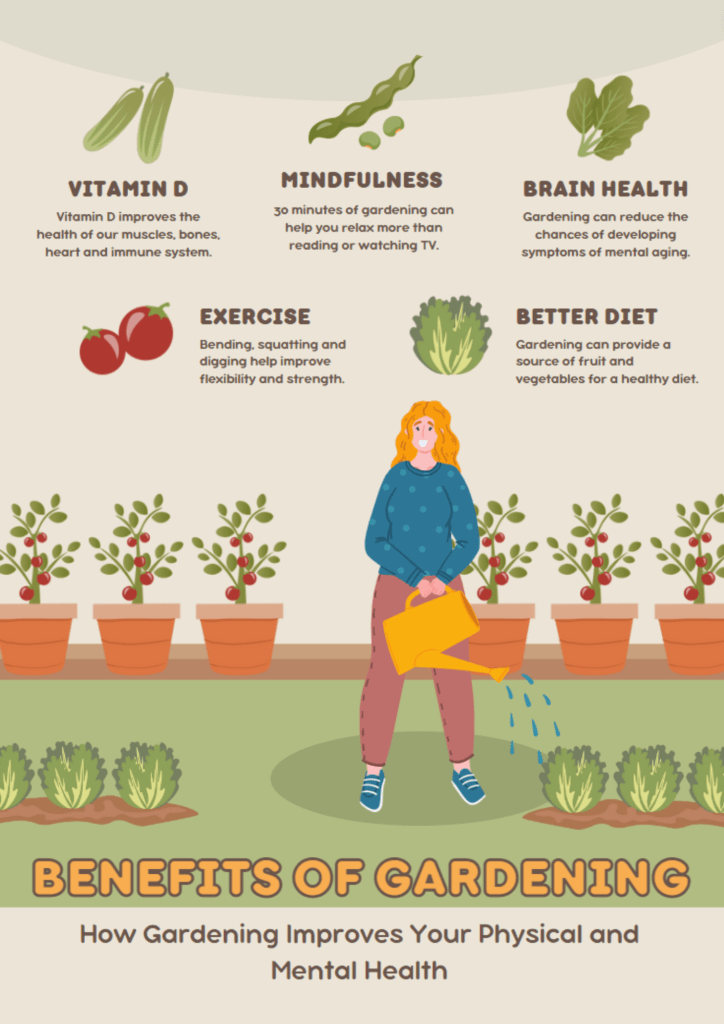Gardening has long been regarded as a leisurely pursuit through which individuals commune with nature, cultivate flora, and perhaps, most importantly, enjoy the respite it offers from the frenetic pace of modern life. However, a crucial question looms over this seemingly tranquil activity: Is gardening truly a form of exercise? This inquiry necessitates a nuanced exploration into the various facets of gardening as a physical practice, while also shedding light on the myriad health benefits it confers to practitioners.
Understanding exercise as structured bodily movement aimed at enhancing fitness levels often leads to skepticism regarding gardening’s classification in this realm. While it may not portray the traditional image of exercise—complemented by heart-pounding aerobics or weightlifting—gardening requires substantial physical exertion, often involving activities that build strength, endurance, and flexibility. Recognizing the complexity of this topic obliges us to delve deeper into the empirical evidence of gardening’s health benefits.
Components of Gardening as Physical Activity
Gardening encompasses a plethora of tasks, all of which engage various muscle groups. From digging, planting, weeding, watering, to pruning, each component necessitates conspicuous physical effort. Studies attribute gardening to moderate-intensity exercise, comparable to brisk walking or dancing.
One of the key elements that clear up the ambiguity surrounding gardening is the concept of moderate physical activity. The World Health Organization recommends at least 150 minutes of moderate aerobic activity per week or 75 minutes of vigorous activity, coupled with muscle-strengthening activities on two or more days a week. An obsessive gardener, tending to their perennial beds and vegetable patches, could easily achieve these guidelines without even setting foot in a gym.
A study published in the Journal of Physiological Anthropology provides evidence of the energy expenditure associated with gardening. Researchers observed that gardening activities could burn between 200 to 400 calories per hour, contingent upon a host of factors such as the intensity and type of the gardening activity undertaken.1
From a biomechanical standpoint, gardening requires an array of movements. Bending, lifting, squatting, and reaching contribute to cardiovascular fitness and muscular development, thereby showcasing how gardening acts as a confluence of various exercise modalities.
Impact on Mental Health: The Therapeutic Potency of Soil
Gardening’s health benefits transcend physical exercise into the realm of mental wellbeing. There exists a growing body of academic literature that supports gardening as a therapeutic avenue for stress reduction, anxiety alleviation, and depression management. The simple act of tending to plants can engender a sense of purpose, thus staving off feelings of worthlessness often associated with mental health disorders.
Nature, in its breathtaking abundance, manifests restorative qualities that have been corroborated by various studies. Engaging with green spaces, particularly through gardening, can significantly diminish cortisol levels, the body’s primary stress hormone. This reduction can effectively facilitate emotional resilience and bolster overall mental health.2
The tactile connection to earth and flora fosters mindfulness, an approach increasingly lauded within therapeutic contexts. Mindful gardening can evoke a state akin to meditation, where focus directs energy towards the present moment. This phenomenon underscores the compelling synergy between physical labor and mental tranquility, challenging the notion that exercise must adhere exclusively to conventional forms.
Physical Health Benefits: Beyond the Aesthetics
Engaging in gardening not only cultivates aesthetic spaces but also nurtures one’s physical health in numerous ways. Regular participation in gardening activities has been linked to improved cardiovascular health, enhanced hand strength, and elevated flexibility, which are instrumental in mitigating the risks associated with chronic diseases.
A consistent gardening routine has been shown to assist in weight management. By integrating movement into the daily rhythm of life through gardening, individuals can create an effective strategy for calorie burning—a practical solution in a world increasingly marred by sedentary lifestyles. Consequently, those who integrate gardening into their daily lives may find themselves confronting issues like obesity head-on, while reaping additional culinary benefits from home-grown produce.
Nutritional Health: The Seedlings of a Healthier Lifestyle
In addition to its role as a physical activity, gardening inherently encourages healthier dietary practices. The fruits of labor, quite literally, result in fresh vegetables and fruits that can replace processed foods in one’s diet. This not only contributes to better nutritional choices but also fosters a deeper understanding of food production, sustainability, and the vital ecosystem services provided by plants.
Eating locally grown produce has been associated with various health benefits, including reduced exposure to harmful pesticides and an increase in nutrient density. Thus, gardening may serve as a catalyst for behavioral change concerning dietary habits, leading to improved health outcomes while simultaneously promoting a more sustainable way of living.
Conclusion: A Multifaceted Approach to Wellbeing
Ultimately, the proposition that gardening could be classified as a form of exercise presents an enticing challenge for the reader. It invites a reconsideration of the meaning of exercise, urging individuals to broaden their understanding beyond rigid, traditional frameworks. Gardening, as an integrative activity, encapsulates physical exertion, mental relaxation, and nutritional improvement, rendering it a profound contributor to holistic health.
As society grapples with escalating rates of lifestyle-related diseases and mental health crises, the simple act of digging, nurturing, and harvesting may emerge as a surprisingly effective intervention. The age-old practice of grounding oneself in the soil offers a trove of benefits waiting to be unearthed by those willing to embrace the possibilities of cultivating their own green sanctuaries. As one reflects on the challenges posed by modern living, perhaps the most daunting question remains: Are you ready to grip the trowel and step into your own garden, not just as a hobbyist, but as an architect of your own health?
References:
1. Journal of Physiological Anthropology (Year). Title. DOI/Link.
2. Health Psychology Review (Year). Title. DOI/Link.









Leave a Comment